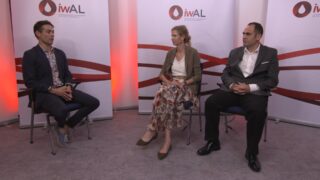I just want to start with clarifying what we talk about when we say bridging therapy. Bridging therapy defines the time period between leukapheresis and CAR T-cell transfusion. This is in general about 17 for axi-cel to up to 42 days depending on the CAR T-cell product, at least if we talk about the commercial CAR T-cell products. We have to distinguish this from the so-called holding therapy that is given from indication prior to leukapheresis...
I just want to start with clarifying what we talk about when we say bridging therapy. Bridging therapy defines the time period between leukapheresis and CAR T-cell transfusion. This is in general about 17 for axi-cel to up to 42 days depending on the CAR T-cell product, at least if we talk about the commercial CAR T-cell products. We have to distinguish this from the so-called holding therapy that is given from indication prior to leukapheresis.
So if we only talk about bridging therapy in diffuse large cell B-cell lymphoma, clearly what we aim for is reducing tumor volume, reduction of inflammation and stabilize the patient so that he can actually receive the CAR T-cells. And we know that there is a rationale for doing this because we know high tumor volume has a negative impact on outcome. High tumor volume is associated with inflammatory markers, which again have shown to have a negative impact on the outcome. We know that high tumor volume has a negative impact on CAR T-cell expansion. So we aim to reduce tumor volume to have a better outcome post-CAR T-cells.
And the question is, what kind of reagents should we use? And the plain answer is, we don’t know. We don’t have any randomized clinical trials. And it’s a very individualized approach. I like to highlight one retrospective analysis of real-world data from the UK, where they looked at no bridging therapy, radiotherapy, chemoimmunotherapy, and combinatorial strategies. And interestingly, radiotherapy has a very favorable outcome post-CAR T-cells. In principle, and that has been shown in multiple clinical trials or multiple real-world evidence data, if you have a response to bridging therapy, you do much better after CAR T-cells.
But the question remains, is this sort of a biological readout? Are we just seeing sort of bad biology versus good biology and the chemotherapy is just sort of revealing this because we also know that patients who are progressive to R-CHOP do particularly poorly after CAR T-cell therapy or are we actually making a change, a game change in tumor volume, inflammation and thereby enabling a greater success of CAR T-cells? So I think that question is still unanswered and we need clinical trials in this setting as currently it is sort of an individualized approach with the aim to decrease tumor volume, which clearly is beneficial, but are we actually doing something against the biology? We don’t know.
This transcript is AI-generated. While we strive for accuracy, please verify this copy with the video.















